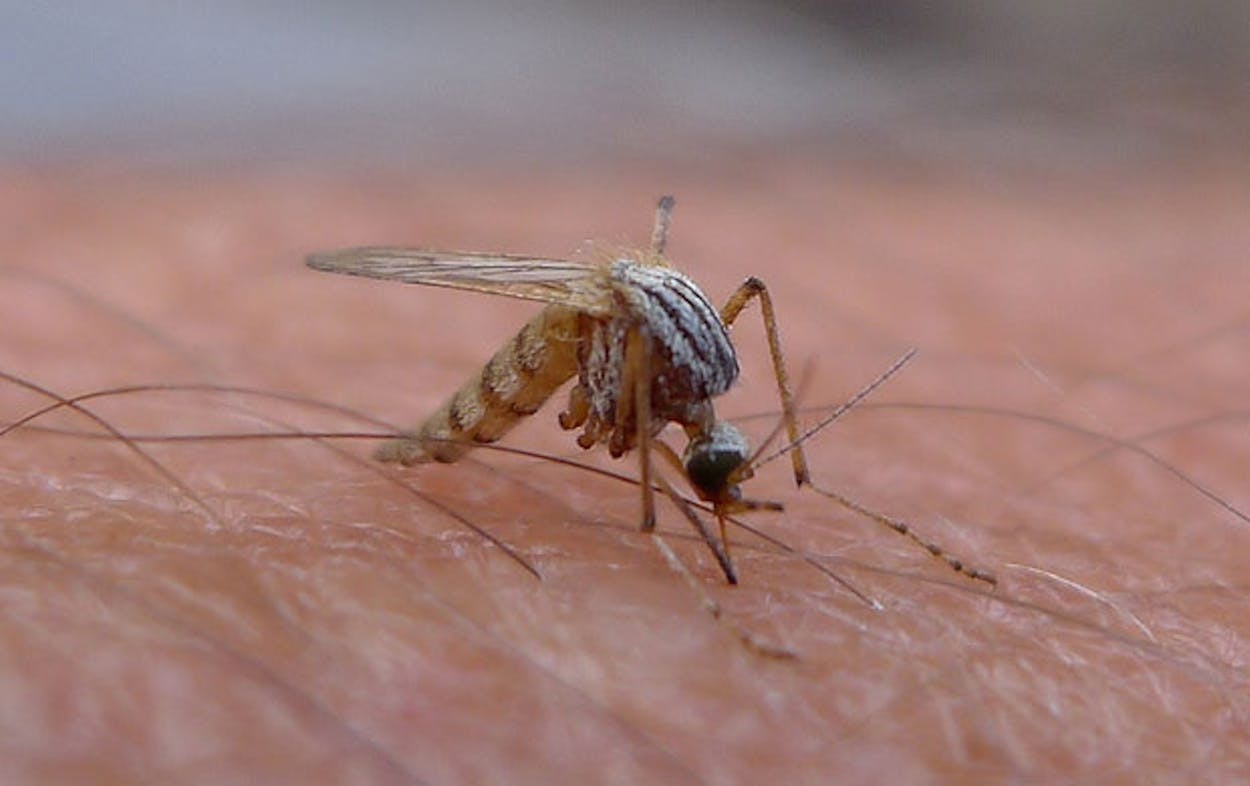West Nile Virus has now killed seventeen Texans, leaving cities scrambling to combat the mosquito-borne disease any way they can.
Some 465 cases have been diagnosed in Texas this year (more than half of all the cases in the country!) and a full 207 of those cases (ten fatal) were in Dallas County.
“Dallas Mayor Mike Rawlings on Wednesday declared the city’s recent West Nile virus outbreak to be a state of emergency and authorized the first aerial spraying of insecticide in the city in more than 45 years,” the AP reported. The state health department will pay the $500,000 to cover the spraying in Dallas.
Texas has even reached out to California for advice, WFAA reported. Sacramento County began aerial spraying after 103 human cases of the disease were reported in 2005.
This Texas Tribune interactive that shows where in the state the outbreak has spread led the Tribune‘s Morgan Smith to declare on Twitter that “This interactive will make you want to avoid Dallas/Fort Worth until mosquito season is over.”
The Texas Department of State Health Services recommends taking the following steps to “reduce exposure” to the virus:
- Use an approved insect repellent every time you go outside and follow the instructions on the label. Approved repellents are those that contain DEET, picaridin or oil of lemon eucalyptus.
- Regularly drain standing water, including water collects in empty cans, tires, buckets, clogged rain gutters and saucers under potted plants. Mosquitoes breed in stagnant water.
- Wear long sleeves and pants at dawn and dusk when mosquitoes are most active.
- Use air conditioning or make sure there are screens on all doors and windows to keep mosquitoes from entering the home.
Time‘s Healthland blog ran the inevitable groaner of a headline on a post about the outbreak: “Everything Is Bigger in Texas, Including the West Nile Virus Outbreak.” The good news, Time reported, is the disease does not produce symptoms in most people:
Eight out of 10 people infected with West Nile virus will have no symptoms, but about 20% will develop fever, headache, body aches, joint pain, vomiting, diarrhea or rash, according to the CDC. Neurological illness from the virus is rare, with less than 1% developing encephalitis or meningitis — inflammation of the brain or surrounding tissues. About 10% of those who develop neurologic infections will die.
Birds serve as a natural reservoir for the virus, and humans fall ill after being bitten by infectious mosquitoes. (Curious what species of birds have died from West Nile? The CDC maintains an extensive list.) According to the Texas Department of State Health Services, the disease was first discovered in Texas in 2002.







